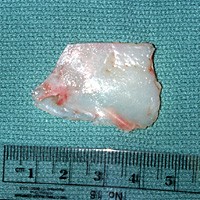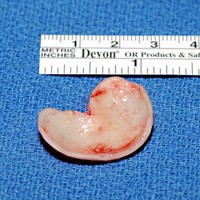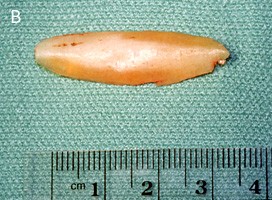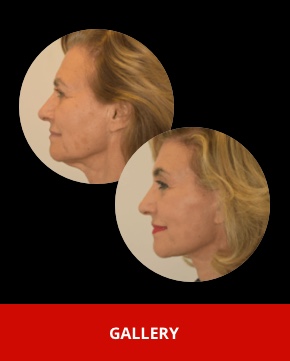Revision Rhinoplasty Surgery in Sydney
Revision Rhinoplasty Surgery
The emotional impact of a failed rhinoplasty can be very severe. Patients have often waited many years for their rhinoplasty and have invested much hope in their initial surgery and surgeon. Rather than the improvement they sought they can be left with a disappointing outcome. The impact on self-esteem and self-confidence can affect nearly every aspect of every day life leading to embarrassment, insecurity and depression.
Risks of revision rhinoplasty surgery
All surgery carries risks. Please here more about the risks of revision rhinoplasty surgery here.
About Me
There are many causes of a failed rhinoplasty. They include poor planning and discussion before the primary surgery, misdiagnosis, infection and technical incompetence of the surgeon. Unfortunately sometimes the initial surgeon possesses the ability to achieve the desired outcome but “rushes” the case, not taking the time to perform those procedures known to optimise outcomes even though they may be aware of them.
Failed rhinoplasty can produce an unnatural appearing nose or one in which breathing is sub-optimal. Surgical destabilisation of the nasal tissues can also then lead to a slowly progressive distortion of the nose over many years, usually associated with worsening breathing as well as cosmetic changes. In addition to the functional and cosmetic issues patients are often dealing with anger, disappointment and regret. Patients then have the additional challenge of finding a surgeon who feels confident they can help them to achieve a better outcome and with whom they feel confident.
My Rhinoplasty Experience & Training
Repairing a previous rhinoplasty
The solution to repairing a nose that has undergone a rhinoplasty can often appear deceptively simple. Unfortunately the process is usually complex, typically far more complex than the initial surgery. The delicate components of the nose typically have to be remade from collapsed, twisted or even completely absent elements. Many components need to be an exact mirror image of those on the opposite side and must be aligned to appear straight. Seams and joints need to be invisible and nasal airflow needs to be adequate for comfortable breathing.
Once complete the revision rhinoplasty must then be strong enough to withstand the contraction forces of healing in the coming months. The blood supply must be adequate for healing to occur and prevent infection. A revision rhinoplasty is considered among the most challenging cosmetic procedures. It is worth noting some consistent differences between primary and revision rhinoplasty. Revision rhinoplasty takes far more time, typically a minimum of 4 hours. Recovery is also longer. Patients with thin or medium skin thickness may require 6 to 12 months for full recovery. Patients with thick skin may require up to two years for all swelling to resolve.
The importance of cartilage grafting in revision rhinoplasty
Revision rhinoplasty almost always requires the use of cartilage grafts to restore form and function to the nose. A graft is a piece of a patient’s own body which is harvested in order to replace or alter another part. Even when the aim of surgery is a smaller nose, grafts may be needed to ensure that the smaller nose is strong and straight. Cartilage in revision rhinoplasty is typically harvested from one of three sites: the nasal septum, the ear or a rib.
Septal cartilage in revision rhinoplasty
The nasal septum is the structure that divides the nose into it’s two halves. It contains cartilage and bone bone covered with skin and mucous membrane. The outer part of the septum is needed to maintain the outer shape of the nose, the inner part can be removed and used as a graft. Septal cartilage can be harvested either through a separate internal incision or through the rhinoplasty incision. The cartilage is often straight, thin and strong and is an ideal material for revision rhinoplasty. However, often septal cartilage has been removed as part of the original surgery. This may have been as part of a “septoplasty” or due to a “septal perforation” which has eroded cartialge. When septal cartilage is carefully harvested a septal perforation should not occur. Septal cartilage is the best graft material for repairing a damaged nose but unfortunately is often in short supply.
Conchal cartilage in revision rhinoplasty
A small incision behind the ear can harvest a large piece of soft, curved cartilage known as the conchal bowl. Generally removing it does not change the shape of the ear. Ear cartilage is curved making it difficult to create straight grafts. It is also somewhat brittle and can crack. In certain situations ear cartilage can be useful. It is often used to create alar batten grafts for nasal valve collapse or to replace nasal tip cartilages.
Rib (costal) cartilage in revision rhinoplasty
The outer part of our ribs are made of bone but there is a component close to the midline that is made of cartilage. Segments of rib cartilage 4cm or longer can often be removed making the source of rib cartilage plentiful. Harvesting and carving rib cartilage takes care and time. The incision is located just under the breast area leaves a small scar 2-4cm long. The area can be tender for around a week after surgery. There is a very small chance of lung injury occurring.
While rib cartilage may be plentiful it is far from the ideal type of cartilage. It is often weak and brittle, cracking easily. It also has an annoying tendency to warp and curl in the weeks following surgery, particularly when using thin grafts to achieve a slender and delicate nose. Noses built from rib cartilage are by necessity often a little larger and bulkier to minimise this risk. Unfortunately in many revision rhinoplasty cases rib cartilage is the only graft option available as septal and ear cartilage sites have been depleted. Techniques are available to minimise the chance of warping but these do not completely eradicate this risk. Rib cartilage is more susceptible to infection and takes longer to integrate into the blood supply of the nose. Warping can be treated with further surgery. Given sufficient time and resources an experienced surgeon can usually restore most noses using rib cartilage.
Which graft is best in revision rhinoplasty?
Often the choice in which graft to use is not known until during the operation. Once the nasal skeleton is visible during surgery it is more clear exactly what elements need to be repaired or replaced. Surgeons nearly always carefully assess the septum to see if any septal cartilage is available. Certain revision rhinoplasty problems are best treated with ear cartilage, others with rib cartilage.
Soft tissues in revision rhinoplasty
The soft tissues overlying the nasal skeleton inevitably are affected during primary rhinoplasty. In revision rhinoplasty these tissues take more time to dissect off the nasal skeleton but also tend to exhibit more severe inflammatory responses in response to further surgery. What this means is that there is typically more swelling and scar tissue in a revision rhinoplasty, which can compromise the cosmetic outcome. This problem gets worse with each revision rhinoplasty.
The soft tissue response over a well constructed framework can ruin the outcome of a revision rhinoplasty. Typically waiting 12-18 months between operations can help reduce surgical inflammation. Unfortunately patients often struggle coping with the emotional effects of a failed rhinoplasty for that length of time and push for surgery to be done earlier. Some patients develop severe inflammatory responses after a revision rhinoplasty procedure that prevents a successful outcome. It is not possible to identify which patients will have this issue before surgery making outcomes in revision rhinoplasty less reliable than primary rhinoplasty.
Blood supply
Revision rhinoplasty typically relies upon many cartilage grafts being transplanted and sutured into the nose. A healthy blood supply allows this to occur successfully and minimises the risk of infection and graft resorption. Additional important factors are a very gentle surgical technique and avoidance of tobacco or nicotine.
Skin elasticity
Often revision rhinoplasty involves replacing tissues that have been removed from previous surgery. This may involve enlarging the nasal framework. The overlying soft tissues need to stretch easily to allow this. Excessive skin tension can bend, shift or collapse the new framework. Excessive skin tension can also interfere with the blood supply to the nose risking infection and graft resorption.
Scar tissue formation
In the days following nasal surgery, cells produce scar tissue that envelopes the nasal tissues. This “glues” all the tissues together and allows rhinoplasty to succeed. In this regard it is not always a bad thing. The amount of scar tissue that is produced varies amongst individuals. Excessive scar tissue can produce thickened skin that looks unnatural. This risk is increased in revision rhinoplasty.
Dr Roth on revision rhinoplasty
Revision rhinoplasty is a complex undertaking requiring a surgeon who possesses great patience and meticulous planning skills. It is often difficult to accurately the estimate the length of surgery for a revision rhinoplasty. Sometimes problems can be addressed in a couple of hours but other times it takes the better part of the working day to correct multiple issues.
There are many potential risks and pitfalls. Harvesting, carving and assembling cartilage grafts is a key part of the surgery. Careful management of the soft tissues is essential to achieving a successful recovery preventing graft resorption and infection.
Nearly all revision rhinoplasty patients can be improved with further surgery with adequate care is taken. However absolute perfection is impossible. In some cases multiple surgeries are needed and are unavoidable. When considering a revision rhinoplasty do not seek a quick fix. Patients need a carefully planned and executed procedure that minimises the chance of causing further harm with the maximum chance of improvement. Patience, conservatism and meticulous planning on the part of the surgeon are essential to achieve a successful outcome.






